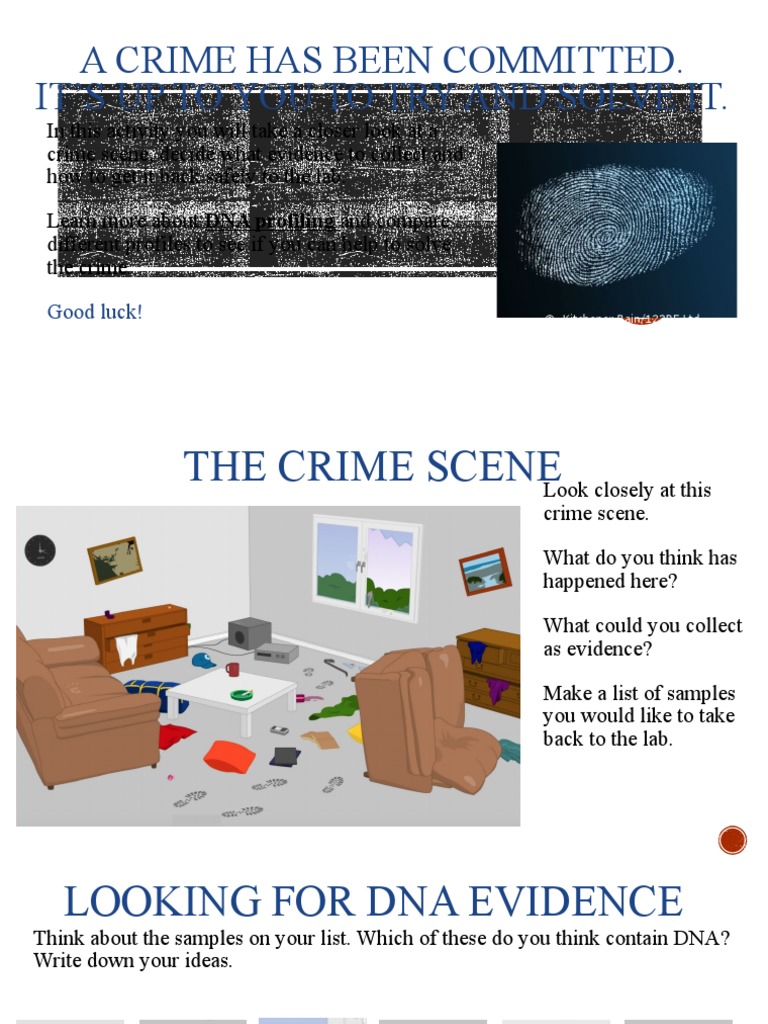The seemingly straightforward process of collecting DNA at a crime scene and using it to identify a perpetrator often evokes a sense of infallible scientific certainty. Television dramas and popular culture frequently portray DNA evidence as an unassailable key, unlocking mysteries with unwavering precision. But the reality is far more nuanced. Why then, does crime scene DNA not always lead to a solved case? The reasons are multifaceted, ranging from the inherent limitations of DNA analysis itself to the complexities of crime scene management and the intricacies of legal admissibility. The allure of genetic fingerprinting as a tool for justice is strong, yet its practical application is fraught with potential pitfalls. Let’s delve into the reasons why this forensic keystone isn’t always the panacea it’s often perceived to be.
The Elusive Nature of Detectable DNA: Sometimes, the issue isn’t the DNA analysis itself, but simply the absence of sufficient, recoverable biological material. A perpetrator might take precautions, wearing gloves or meticulously cleaning up after themselves. The act of committing a crime, depending on its nature, may not inherently lead to the transfer of biological material in quantities suitable for downstream analysis. Furthermore, environmental factors play a significant role. Exposure to sunlight, moisture, and extreme temperatures can degrade DNA, rendering it unusable. A seemingly promising sample from a crime scene that has been exposed to the elements for a prolonged duration might yield only fragmented or degraded DNA, insufficient for profiling. The degradation, fragmentation, and overall availability of amplifiable genetic material can be a significant hurdle. Even with advanced techniques, a degraded or insufficient sample offers very limited data.
The Problem of DNA Transfer: Primary, Secondary, and Beyond: The presence of DNA at a crime scene doesn’t automatically equate to involvement in the crime. DNA transfer can occur through various mechanisms, complicating the interpretation of findings. Primary transfer happens when DNA is directly deposited from a person onto an object or surface during an activity. Secondary transfer occurs when DNA is transferred from one person to another, or from a person to an object, via an intermediary. For instance, someone could unknowingly transfer DNA onto a doorknob, which is then touched by an innocent individual who subsequently visits the crime scene, leaving the first person’s DNA behind. Understanding the circumstances surrounding the crime and the potential for secondary or even tertiary transfer is critical to interpreting the significance of any DNA found. Failing to account for these possibilities can lead to misidentification or wrongful accusations. The complexities of allelic dropout and stutter artifacts inherent to PCR based STR profiling can also create interpretive challenges regarding the source and relevance of deposited material.
The Labyrinth of Contamination: Contamination represents a significant challenge in DNA analysis. It can occur at any stage, from the initial crime scene investigation to the laboratory analysis. Crime scene investigators, forensic technicians, or even laboratory personnel can inadvertently introduce foreign DNA, compromising the integrity of the sample. Proper protocols, including the use of personal protective equipment (PPE), meticulous cleaning procedures, and the implementation of validated workflows, are essential to minimize the risk of contamination. However, even with the most stringent precautions, the potential for contamination remains a concern. Contamination may introduce exogenous alleles not actually associated with the crime, leading to false inclusions or masking the true perpetrator’s DNA profile. Allele drop-in artifacts introduced by reagent contamination can confound results and necessitate extensive re-analysis. Therefore, rigorous quality control measures are critical.
The Database Dilemma: Absence in the Repository: A DNA profile obtained from a crime scene sample is only useful for identification if it matches a profile already present in a DNA database. These databases, such as the Combined DNA Index System (CODIS) in the United States, contain DNA profiles of convicted offenders, arrestees (in some jurisdictions), and individuals who have voluntarily submitted their DNA. If the perpetrator’s DNA is not in the database, the crime scene profile will not yield a match, leaving investigators without a lead. The effectiveness of DNA databases depends on their comprehensiveness and the criteria for inclusion. Even a comprehensive database is limited by its very nature; it can only identify individuals who have previously been involved in the criminal justice system, therefore precluding the identification of first-time offenders.
The Burden of Complex Mixtures: Often, crime scene samples contain DNA from multiple individuals, resulting in a complex mixture. Deconvoluting these mixtures to identify the individual contributors can be exceedingly challenging, especially if the DNA is degraded or present in unequal quantities. Advanced software and statistical methods are used to analyze complex mixtures, but the results are often probabilistic rather than definitive. The more contributors to a mixture, the more difficult it becomes to confidently assign DNA profiles to specific individuals. Furthermore, the presence of close relatives in a mixture can further complicate the analysis, as they share a significant proportion of their DNA. The inherent ambiguities in mixture interpretation can lead to inconclusive results or even erroneous conclusions. The statistical weight assigned to a potential match from a complex mixture may be low, rendering the evidence less compelling in court. Stochastic amplification effects further complicate the interpretation of complex mixtures.
The Legal Gauntlet: Admissibility and Interpretation: Even if a DNA profile is successfully obtained and matched to a suspect, its admissibility in court is not guaranteed. The defense may challenge the validity of the DNA evidence, questioning the methods used for collection, analysis, or interpretation. Chain of custody, proper documentation, and adherence to established protocols are all subject to scrutiny. Furthermore, the interpretation of DNA evidence can be complex and requires expert testimony. Jurors may struggle to understand the statistical probabilities associated with DNA matches, and they may be unduly influenced by the perceived infallibility of DNA evidence. Ensuring that jurors understand the limitations of DNA evidence and the potential for error is critical to preventing wrongful convictions. The Frye and Daubert standards dictate stringent validation and quality control requirements for forensic methodologies, influencing admissibility. Expert witnesses must clearly articulate the probabilistic nature of matches and address alternative explanations for the presence of a particular DNA profile at the crime scene.
The Ethical Considerations: Privacy and Potential Misuse: The increasing power of DNA technology raises ethical concerns about privacy and the potential for misuse. DNA databases contain sensitive genetic information, and there are concerns about who has access to this information and how it is used. Furthermore, advances in DNA phenotyping allow scientists to predict physical characteristics from DNA samples, raising concerns about genetic profiling and potential discrimination. The potential for law enforcement to use DNA data for purposes beyond criminal investigation raises questions about civil liberties and the right to privacy. Striking a balance between the use of DNA technology for crime solving and the protection of individual rights is a complex and ongoing challenge. The long-term storage and potential secondary uses of DNA samples necessitates careful consideration and robust governance frameworks.
In conclusion, while DNA analysis has revolutionized forensic science and significantly enhanced our ability to solve crimes, it is not a foolproof solution. The reasons why crime scene DNA isn’t always useful are diverse and interconnected, ranging from the limitations of sample availability and the complexities of DNA transfer to the challenges of contamination, database limitations, complex mixture interpretation, legal admissibility, and ethical considerations. A comprehensive understanding of these limitations is essential for ensuring that DNA evidence is used responsibly and effectively in the pursuit of justice. The future of forensic DNA analysis lies in continued research and development of new technologies, coupled with rigorous quality control measures and a commitment to ethical principles. Only through a nuanced and informed approach can we harness the power of DNA while mitigating its inherent limitations.










Leave a Comment